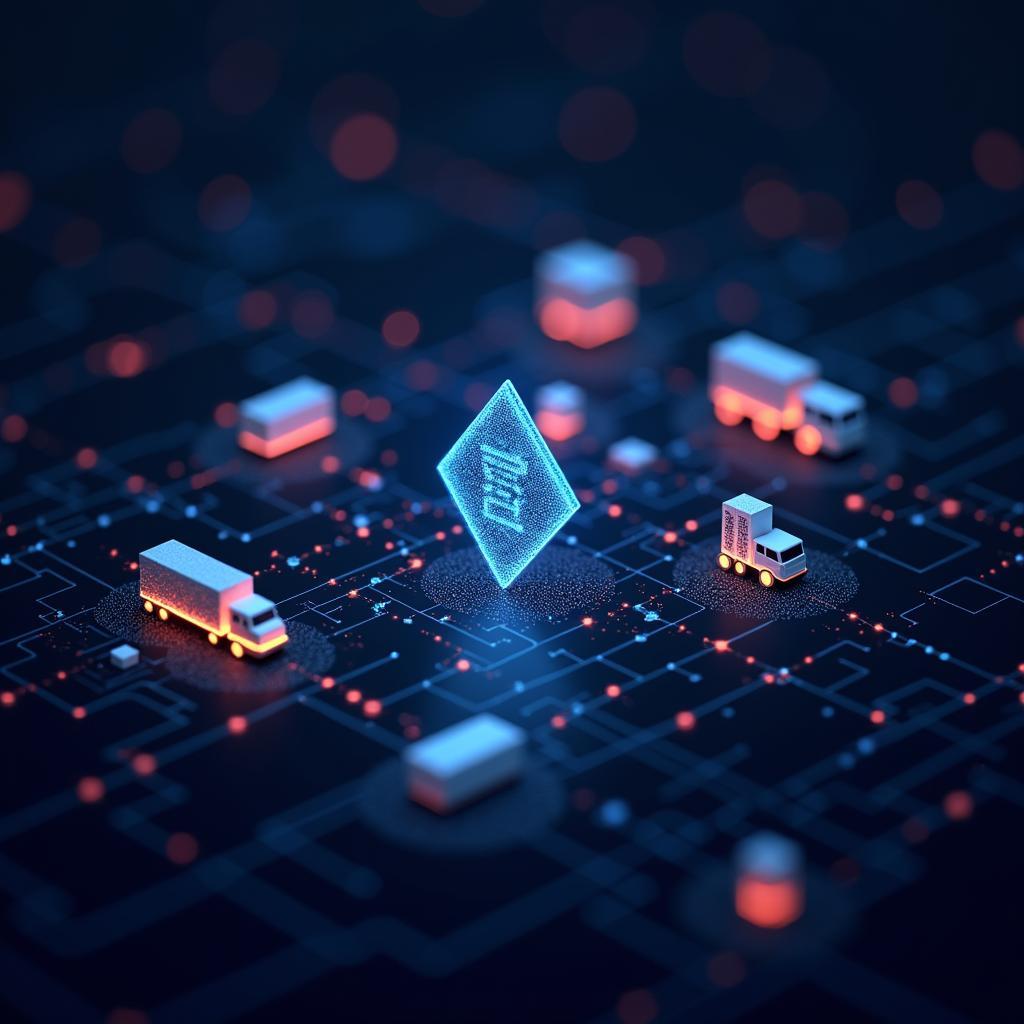The IELTS Reading Test is designed to evaluate a candidate’s reading skills, which include understanding the main ideas, identifying main ideas, understanding the writer’s opinion or purpose, and following arguments. Each Reading Test comprises three sections, each with a set of texts and accompanying questions. These sections can range in difficulty from easy to hard and feature various question types, such as Multiple Choice, True/False/Not Given, and Summary Completion, among others.
This article will delve into the topic “How is blockchain technology transforming supply chain transparency?”—a subject that has gained prominence in recent years due to technological advancements and growing transparency demands in global trade. Given the relevance and increasing mention of this topic, it is likely to appear in future IELTS Reading Tests.
Sample IELTS Reading Passage and Questions
Reading Passage: Medium Text
How Blockchain Technology is Transforming Supply Chain Transparency
Blockchain technology, often associated with cryptocurrencies, is revolutionizing numerous industries, including supply chains. The fundamental feature of blockchain technology is its ability to provide a decentralized, transparent, and immutable ledger. This characteristic has the potential to solve many of the long-standing issues plaguing supply chains, such as fraud, inefficiency, and lack of transparency.
One of the primary advantages of blockchain is its transparency. Every transaction recorded on a blockchain is visible to all participants, creating an immutable and auditable trail. This level of transparency is particularly critical in supply chains, where products move through multiple hands before reaching the end consumer. For example, suppose a product is compromised at any stage of its journey. In that case, blockchain enables all stakeholders to trace the product’s history and pinpoint exactly where the compromise occurred, allowing for swift rectification.

Moreover, blockchain technology can enhance the efficiency of supply chains by automating various processes. Smart contracts, which are self-executing contracts with the terms directly written into code, can automatically trigger actions when predefined conditions are met. This capability reduces the need for intermediaries, consequently cutting costs and reducing delays.
Another aspect where blockchain proves beneficial is in combating fraud. By ensuring that all records are tamper-proof and verifiable, blockchain minimizes the risk of counterfeiting and theft. Products such as pharmaceuticals, luxury goods, and electronics, which are often susceptible to these issues, can significantly benefit from blockchain’s traceability features.
Despite its numerous advantages, the adoption of blockchain in supply chains is not without challenges. Scalability remains a significant concern, as the technology needs to handle a vast number of transactions without compromising speed and efficiency. Additionally, there is a steep learning curve associated with implementing blockchain, necessitating substantial investment in time and resources.
Nevertheless, the potential benefits of blockchain in transforming supply chain transparency far outweigh the challenges. As more companies recognize these advantages, blockchain adoption is likely to accelerate, ushering in a new era of transparent, efficient, and secure supply chains.
Questions
Multiple Choice
-
What is a fundamental feature of blockchain technology?
a. Centralized control
b. Decentralized ledger
c. Paper-based tracking
d. Manual auditing -
How does blockchain technology improve transparency in supply chains?
a. By hiding transaction records
b. By providing an immutable and auditable trail
c. By increasing the number of intermediaries
d. By slowing down transactions
True/False/Not Given
- Blockchain technology ensures that no fraud occurs in supply chains.
- Smart contracts in blockchain technology can automate processes when predefined conditions are met.
- The scalability of blockchain is not a concern for its adoption in supply chains.
Summary Completion
Complete the summary using words from the passage.
Blockchain technology can fundamentally transform supply chains by providing a and ledger that ensures . Smart contracts further enhance efficiency by reducing the need for . However, challenges such as ___ and the learning curve still hinder widespread adoption.
Answer Key
Multiple Choice
- b. Decentralized ledger
- b. By providing an immutable and auditable trail
True/False/Not Given
- False
- True
- Not Given
Summary Completion
Blockchain technology can fundamentally transform supply chains by providing a transparent and immutable ledger that ensures traceability. Smart contracts further enhance efficiency by reducing the need for intermediaries. However, challenges such as scalability and the learning curve still hinder widespread adoption.
Typical Errors and Tips
Common Mistakes
- Skimming Too Quickly: Some candidates may skim through the passage too quickly, missing crucial information. It’s essential to balance speed with comprehension.
- Ignoring Synonyms and Paraphrases: Test takers often look for exact word matches with the questions, rather than synonyms or paraphrased content.
- Misinterpreting the Question: Failing to understand the question type properly, especially True/False/Not Given, can lead to incorrect answers.
Tips for Improvement
- Active Reading: Engage with the text actively by noting down key points and summarizing paragraphs in the margins.
- Practice Synonyms: Familiarize yourself with common synonyms and paraphrasing to enhance your ability to identify the correct answers.
- Time Management: Practice under timed conditions to improve both speed and accuracy.
Vocabulary
- Immutable (adj.): /ɪˈmjuː.tə.bəl/ – Unchangeable over time.
- Decentralized (adj.): /ˌdiːˈsɛn.trə.laɪzd/ – Distribution of functions and powers away from a central authority.
- Transparency (n.): /trænˈspærənsi/ – The quality of being easily seen through or understood.
- Smart Contract (n.): /smɑːrt ˈkɑːn.trækt/ – A self-executing contract where the terms are directly written into code.
Grammar
Complex Sentences
Form: Subordinate Clause + Main Clause
Example: “Despite its numerous advantages, the adoption of blockchain in supply chains is not without challenges.”
- Subordinate Clause: Despite its numerous advantages
- Main Clause: the adoption of blockchain in supply chains is not without challenges
Practice Advice
To achieve a high score in the IELTS Reading Test, consistent practice is key. Regularly read articles or journals on various topics, summarize key points, and practice answering different types of questions. Focus on improving your vocabulary and grammar through deliberate practice, and always review your mistakes to identify areas for improvement.